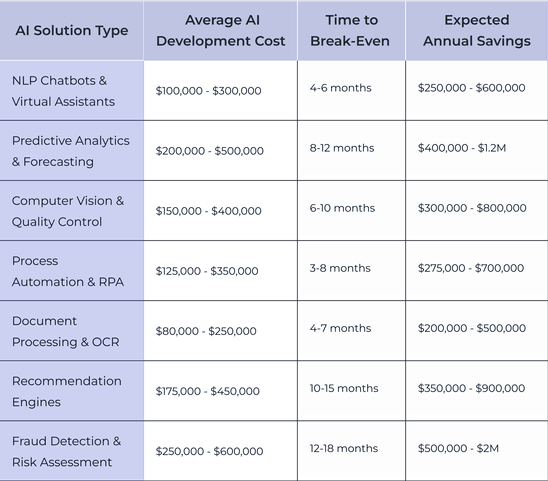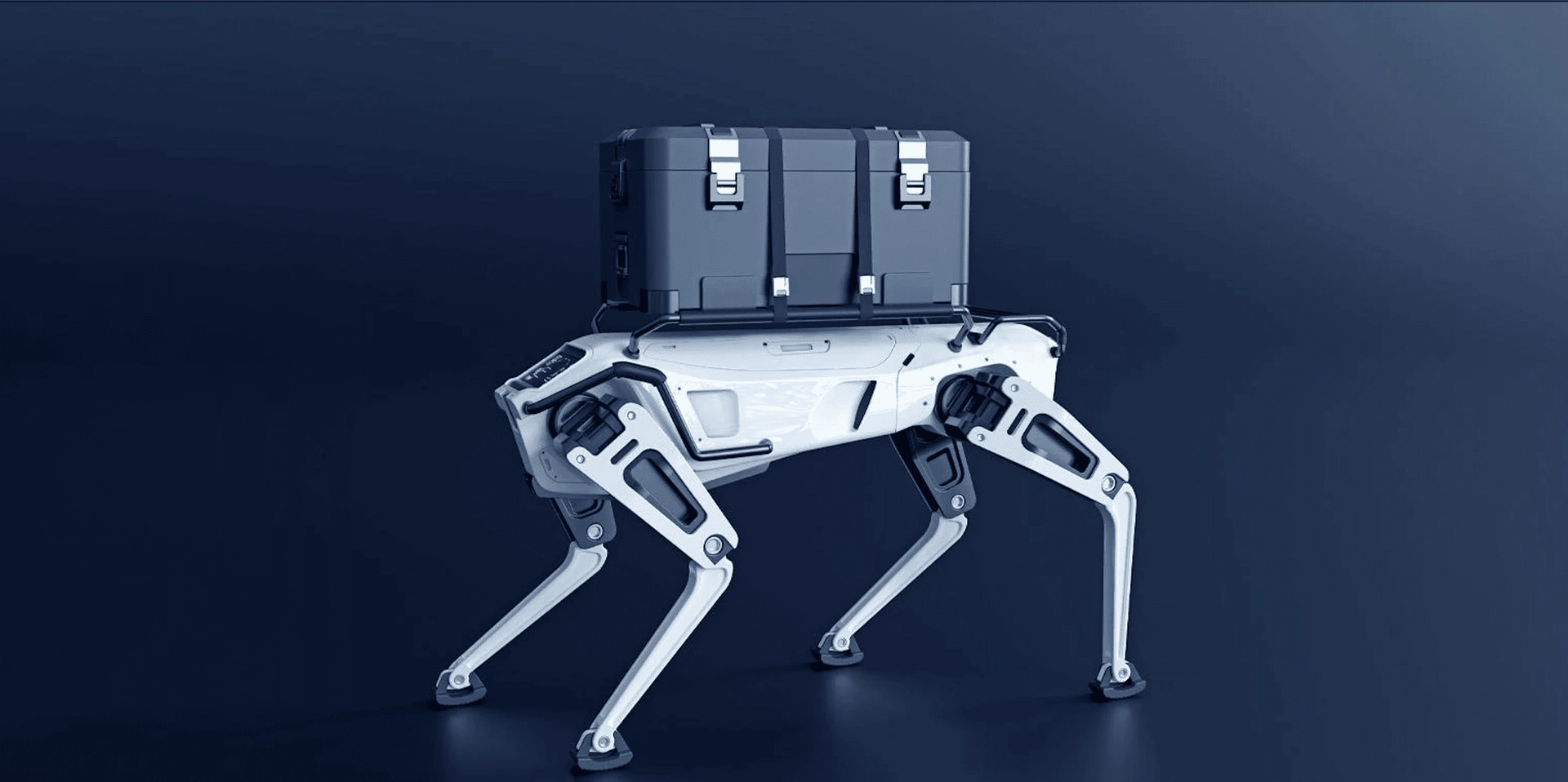AI Cost Reduction Outlook: How to Cut Operational Expenses Smartly

Ruben Melkonian
CEO
How much is your organization losing every quarter by ignoring AI cost reduction potential? According to a recent McKinsey study, companies that have already applied gen AI across most critical operations see cost reduction by over 20%.
While 93% of C-level executives plan to use AI to slash expenses in the coming 18 months, the gap between intention and execution continues to widen – costing businesses millions in missed opportunities.
Through our work with over 50 businesses seeking to streamline spending and improve performance, we’ve discovered that AI cost efficiency is incomparably successful. Our AI consultants at Quantum, time and again, observed that companies implementing artificial intelligence technology generally achieve 10x higher ROI than those still dependent on manual workflows.
Having helped organizations adopt AI and machine learning solutions for quite some time, we decided to pull back the curtain on how does AI reduce costs. We’ll also explain the practical steps CEOs and CMOs can take to prove AI ROI and start cutting overheads that quietly bleed budgets every day.
How Does AI Reduce Costs: Four Layers of AI Cost Impact
Manual task automation and productivity gains – that’s usually where the AI conversation starts. And ends. As McKinsey’s survey found, just 1% of leaders say they’ve reached a stage where AI is fully integrated and actually drives outcomes.
While basic task automation delivers immediate savings, it represents only one of the four layers of AI’s cost optimization potential. Each of them helps companies cut expenses and increase margins, but on different levels. Let us show you how.
1. Surface Layer: Direct Automation Savings
The surface layer represents what most organizations, to be exact 75% of the surveyed, discuss in boardrooms: direct task replacement and immediate labor savings. It’s the “low-hanging fruit” of AI implementation, but also a vital first step for companies that, for some reason, haven’t embraced gen AI solutions yet.
Here, we talk about the digitalization of simple, routine tasks like email management or document scanning, where one human action is replaced with a digital one, and saves X hours. Companies investing at least 20% of their IT budget in automation achieved an average of 22% in cost savings, primarily by automating repetitive tasks and minimizing manual errors.
One particularly noticeable case is the seemingly simple automation of multilingual customer support for one of our clients. A Canadian provider of AI-powered customer experience platforms poured millions yearly on large teams handling repetitive queries in rare and mixed languages.
Now, 70% of the inquiries are addressed by a natural language processing (NLP) chatbot platform powered by Google BERT. Thanks to Quantum’s solution, the company cut 20-25% in customer service expenses within just one year, a six-figure operational spend.
2. Process Layer: Workflow Optimization and Error Reduction
This is the layer where AI reconfigures the entire workflow or process that may involve multiple tasks and systems. It’s where the real cost leverage begins.
Instead of simply automating a handful of tasks, generative AI at this level helps companies get rid of duplicated work and bottlenecks, collapse multi-step approvals, and remove latency from critical processes. And it does all of this with little to no human touch. See the difference?
From our experience, HR and financial process automations top the demand list because they offer clear ROI, standardized workflows, and regulatory compliance benefits that appeal to executives looking for measurable wins and ways to reduce operational costs. Talking about quantifiable outcomes, here’s one of our clients’ stories about an automated document parsing solution.
A Sweden-based financial services company needed to completely overhaul its invoice processing workflow, which was full of manual bottlenecks from dealing with thousands of documents daily.
Quantum team approached this challenge at the process layer, so here’s what we’ve done:
3. Intelligence Layer: Predictive Insights and Proactive Cost Prevention
Business intelligence solutions powered by generative AI technologies allow companies to spot issues and not-yet-visible cost drivers before they impact the bottom line. That’s what the intelligence layer is about and where the cost of implementing AI begins to pay off in measurable ways.
Realizing the huge strategic and financial upside, 28% of CFOs are already using artificial intelligence to automate forecasting, and another 39% plan to adopt it within the year. The use cases are diverse and usually come with a million-dollar perspective of cost avoidance and efficiency gains.
For example, one oil and gas exploration company uses a machine learning model developed by the Quantum team to predict the location of oil reservoirs. We segmented data by geographical and seasonal factors and applied feature selection techniques to achieve the desired 70% accuracy in site predictions.
And now, the most interesting part – the actual advantages of cost-effective AI.
The client saves $10-40 million per exploration cycle through more data-driven and precisely targeted site selection. On top of the direct savings from fewer unsuccessful drilling operations, the intelligence-layer solution allowed the company to refine its exploration strategy and identify previously overlooked high-potential areas. They expanded their explorable territory by 300% while decreasing risk exposure by 70%.
4. Ecosystem Layer: Network Effects and Compound Improvements
Traditional cost reduction follows predictable patterns: cut 10% from operations, save 10% overall. Ecosystem-layer AI breaks this linear relationship. Organizations operating at this level create a snowball effect where improvements multiply faster as more partners join their
network.
The cost of implementing artificial intelligence at the ecosystem level becomes insignificant compared to the loss of staying out.
To put it in context, let’s take a medicine service provider and see the mechanics of the network effect.
Quantum developed a shared AI-powered decision support system (DSS) to help medical practitioners fight COVID-19 and the associated challenges better.
Each of the 50+ hospitals and regional health authorities contributes data to a shared AI-based DSS solution that improves treatment recommendations, protocol compliance, and EMR synchronization for all facilities.
If we go into detail, they collect patient data, e.g., examination results, vital signs, and treatment history, which is automatically synchronized with the central hospital information system. So when one of the hospitals encounters a similar case or pattern, the DSS gives the optimal recommendations that adhere to expert-defined rules.
The most compelling aspect is that even if competitors invest in the identical technology, they won’t be able to replicate the network effect, as they lack the data network that powers optimization.
AI Investment Payoff: Costs, Returns, and Insights
“How much does AI cost?” and “What is the approximate cost of implementing artificial intelligence in business?” These are the two most frequently asked questions Quantum AI consultants have to answer repeatedly. But evaluating the AI development and implementation cost in isolation will miss the full picture, where technology investment evolves into a million-dollar value creation engine.
Having analyzed 50+ enterprise AI projects Quantum built for clients, we’ve prepared a simple table comparing the average development expenses versus potential financial returns.
Let’s be upfront that the AI development cost may seem pretty high, especially when it comes to custom predictive engine development or data integration pipelines.
But organizations following systematic implementation achieve returns that justify initial expenditure within 18-24 months and create sustainable competitive advantages worth multiples of original investments.
AI Cost Reduction Through a Technical Lens
AI model deployment is only one piece of the puzzle. To see the tangible cost benefits from artificial intelligence, business leaders also need to establish the right technical architecture that optimizes performance while lowering operational expenses.
Our AI experts have outlined four critical technical components that help you ensure your AI initiatives deliver maximum ROI without draining resources.
Scalable Data Architectures
Data infrastructure is a major, yet frequently overlooked, financial burden in AI projects. Easy-to-scale architecture designed from the start helps companies avoid the expensive “rebuild and migrate” problem as data volumes grow.
The best long-term strategy would be to adopt an elastic infrastructure, no matter whether you choose cloud-native solutions, hybrid data lakes, or distributed pipelines.
AI Model Selection and Tuning
An advanced ML model isn’t always the right fit for every case. Many enterprises initially opt for large-scale deep learning solutions, which often demand huge computing power and specialized hardware.
Yet, what we recommend is to select models proportionate to the task. For example, you don’t need a neural network to classify structured tabular data when classical logistic regression or gradient boosting are more than sufficient to deliver accurate results.
Another practical way to save costs on development is fine-tuning pre-trained models, rather than building one from scratch. Told in confidence, fine-tuned smaller models often outperform large general-purpose models at 10x lower inference costs for domain-specific tasks.
AI Integration into Workflows
A company can realize the real value of artificial intelligence only when it integrates seamlessly into existing business operations. Nothing surprising here. However, many companies approach AI projects as a standalone add-on, and as a result, they struggle with inefficiencies, duplicate tools, and extra spending on middleware.
So, by designing AI around current workflows, organizations reduce friction, decrease redundant manual handoffs, and cut unnecessary licensing expenses.
Continuous Learning with MLOps
Unlike traditional software that often follows a “build and deploy” cycle, AI systems need constant refinement to continue producing relevant outputs.
MLOps (machine learning operations) frameworks help you put this task on automation rails by taking care of model retraining, drift monitoring, and versioning with minimal human intervention. Such an automation dramatically lowers ongoing maintenance costs.
How to Get Started: AI Implementation Roadmap from Quantum
McKinsey’s recent research reveals a crucial insight: establishing a clearly defined roadmap to drive generative AI adoption has one of the biggest impacts on EBIT. In other words, the fastest way to turn artificial intelligence into a profit engine is to plan its adoption in value-driven phases.
The Quantum team has mapped the steps we usually follow to help businesses adopt AI technology painlessly and with maximum ROI and effectiveness.
Step 1. Define High-Impact Goals
Identify the key pain points where gen AI can save your team time or reduce expenses. To do that, ask yourself these questions:
- Where does human decision-making repeatedly slow down the process?
- Which processes generate costs that rarely appear on the balance sheet?
- Where do delays directly affect customer satisfaction, retention, or revenue?
What’s important here is to start with 1-2 processes most subject to costly bottlenecks and not try to revamp the entire operation. Once you pinpoint them, set clear objectives to better track ROI and put capital into initiatives that deliver the most value.
Step 2. Map Processes & Data Flows
To separate out repetitive and time-draining tasks, you should understand and document how existing business processes move across departments. Create as detailed process maps as possible, highlighting bottlenecks and redundancies.
Organizations that thoroughly map their processes before AI rollout achieve 35% better results because they understand exactly where automation will have maximum impact.
You should also trace data flows, in particular, where information gets delayed, duplicated, or lost between systems. Identify data sources, quality levels, and access points that will feed your AI systems. It’s a must if you want to integrate technology with existing workflows properly.
Step 3. Select Optimal AI Solutions and Architecture
That’s one of the trickiest and decisive tasks requiring special expertise. Quantum AI consultants will help choose the most suitable AI technologies and the necessary architecture for your particular operational requirements. At the same time, we make sure the tech stack fits your budget.
When choosing the right solution, look for technologies that can bring quick automation wins and scale when your project evolves. You can combine several AI technologies in one solution to get better results and multiply the cost savings.
Step 4. Pilot & Measure
The best practice is to deploy AI solutions in controlled phases. So, start with small pilot programs in low-risk, yet high-impact areas to demonstrate the immediate value. Then, continue with proof-of-concept implementations lasting 30-60 days, followed by department-wide rollouts.
To understand whether AI really works for your business, you should assess the effectiveness of your project. Depending on your goals, it could be lower error rates, saved hours for your team, faster workflows, etc.
Step 5. Scale & Integrate
When you are certain your AI project is stable and proven to be reliable in real-world scenarios, expand it into connected processes and organization-scale workflows. Key points here are establishing data pipelines and governance standards to ensure the quality of data for AI. Now, your model is ready to be integrated with your business apps to enable automation.
Step 6. Monitor & Optimize
For your AI model to stay relevant and perform as expected, it needs updates and refinements over time. In this regard, introducing MLOps practices would be the best choice as it automates most of the core maintenance activities. It’s much easier to prevent performance degradation, as you will be alerted as soon as anomalies are detected.
Final Thoughts on AI Cost Reduction Potential
The fact is, gen AI generates returns unmatched by other technology investments. With artificial intelligence, large enterprises as well as small businesses can gain transformational results that drive lasting competitive advantages on top of direct cost savings.
To sum up, here are several undeniable pieces of evidence of AI cost efficiency:
- Artificial intelligence delivers immediate and measurable impact
While most organizations experiment with AI, expert-guided implementations consistently reduce operational costs by 20-35% within the first year through automation of high-volume processes and elimination of manual errors.
- AI cuts errors and inefficiencies
Modern ML systems show incredible 95%+ accuracy in data processing, quality control, and decision-making tasks. So, you can rely on them to reduce costly human errors that typically account for 15-20% of operational expenses.
- AI optimizes resources and increases ROI
ML algorithms let you make the most out of your current equipment, assets, and workforce capacity. For example, smart scheduling and routing software can streamline processes to gain 3-8x return on AI investments.
- AI enables scalable growth without cost increases
Organizations can expand operations, serve more customers, and process higher volumes while maintaining or reducing per-unit costs through intelligent automation.
Quantum helps you multiply these benefits by deploying gen AI solutions at scale across your entire organization. Our engineers design, integrate, and fine-tune LLM and AI systems so that your every business unit, team, and process sees the desired spending cuts.
The next step is simple: let the Quantum team assess your AI readiness and cost reduction potential. Our specialists will analyze your business processes, pinpoint high-impact opportunities, and create a custom roadmap for your AI implementation success.
Don’t let competitors gain advantages while you’re still calculating implementation costs. Contact Quantum to unlock the unparalleled AI-driven cost efficiency.
AI Consulting
We help define relevant use cases, assess data readiness, and build AI adoption roadmaps to ensure regulatory alignment, cost-effectiveness, and measurable impact.
Check the service














